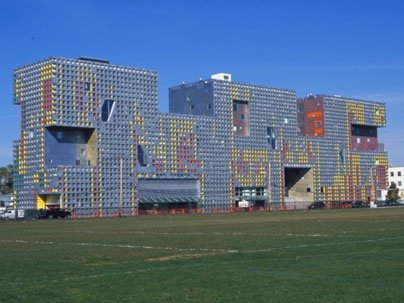Ever since its opening in 2002, Simmons Hall -- or more affectionately, the "sponge" -- has been, among other things, one of MIT's most unique buildings. Now it is the focus of a book documenting an MIT student competition that analyzed communications and the use of space within the building.
Designed by architect Steven Holl, the building's exterior contains more than 5,500 small square windows, but its uniqueness doesn't just involve its façade. Though architects came from far and wide to tour Simmons, its residents soon identified problems with the building. For example, the terraces were small and difficult to make use of, and, given the perforated elements key to much of the interior walls of the building, there was no place to hang bulletin boards, a key method of communication in college dorms.
Carlo Ratti, Associate Professor of the Practice in the Department of Urban Studies and Planning, had been living in the building for about a year when a student resident approached him about the problems. Instead of tackling them on his own, from his perspective as an architect Ratti proposed that the students themselves address them in the form of a competition.
"The great thing is to have input and feedback from users," Ratti said of the competition. "Letting students speak out was an important part of the dialogue."
The competition, chaired by Robert Campbell, the Pulitzer Prize-winning architecture critic for the Boston Globe, had a jury of students, faculty and administration. Ten teams of various sizes participated. The teams were to address the problems of terrace use and building communications, but could also suggest other changes to the building or its furnishings.
The results ranged from practical to outrageous. One team proposed that the level 8 terrace be converted into a glassed-in movie theatre with stadium seating. Another simply proposed building a 'clone' of Simmons across the street so that students would not be disturbed by visiting architects. Yet another team suggested extending certain walls and covering them with chalk-friendly paint.
Although it's not yet certain whether the students' suggestions will be implemented in the building itself, their results were so unique and interesting that they were put on display at an exhibition organized by the Canadian Center for Architecture in Montreal. Further, "Inside the Sponge: Students Take On MIT Simmons Hall," a book documenting the competition and its results, was published this month by the Canadian Center for Architecture.
A version of this article appeared in MIT Tech Talk on October 8, 2008 (download PDF).






